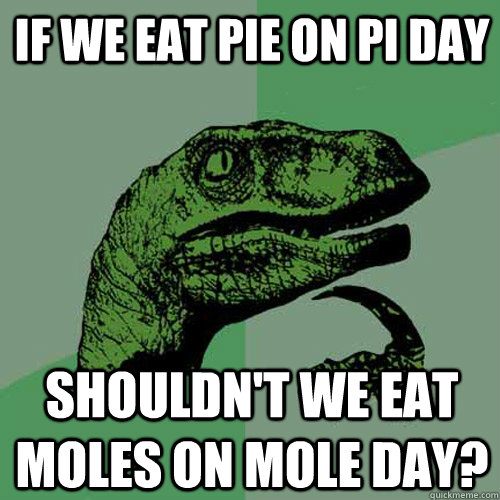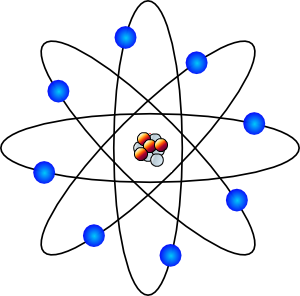October 23 (from 6:02 am to 6:02pm) is MOLE DAY!!
All week we have been working on the relationships between the things we can measure about substances (mass & volume) and the things we can't see & count (# of individual atoms). The key to all of these relationships is the ever-present MOLE.
We should be experts now in how to convert between grams, moles, liters, and particles. (If not, here's a great tutorial: http://misterguch.brinkster.net/molecalculations.html)
So let's just celebrate mole day with ... drumroll please ... moles of mole jokes!! =D
Q: Why is it bad to tell mole jokes? A: It's mole-itically incorrect
Q: What is a mole's favorite movie? A: The Green Mole
Q: What did Avogadro get when he mixed ice cream, chocolate syrup, and milk together? A: A chocolate Moledt
Q: What did Avogadro teach his students in math class? A: Moletiplication
Q: What kind of fruit did Avogadro eat in the summer? A: Watermolens
Q: How many guacs are in a bowl of guacamole? A: Avocados number!
Q: What does Avogadro put in his hot chocolate? A: Marsh-mole-ows!
Q: How does Avogadro write to his friends? A: By e-mole!
Q: Why is Avogadro so rich? A: He's a multi-mole-ionare!
Q: Why was there only one Avogadro? A: When they made him, they broke the Moled
Q: What kept Avogadro in bed for two months? A: Moleonucleosis
Q: What do you get when you have a bunch of moles acting like idiots? A: A bunch of Moleasses
Q: Why did Avogadro stop going to a chiropractor on October 24th? A: He was only tense to the 23rd!
source: http://www.jokes4us.com/animaljokes/molejokes.html
source: http://www.jokes4us.com/animaljokes/molejokes.html







